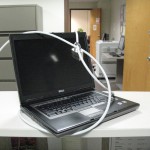 HSLS offers classes on database searching, software applications such as Adobe Photoshop, bibliographic management, molecular biology and genetics, and library orientations. For more information visit the online course descriptions.
HSLS offers classes on database searching, software applications such as Adobe Photoshop, bibliographic management, molecular biology and genetics, and library orientations. For more information visit the online course descriptions.
Classes are held on the first floor of Falk Library (200 Scaife Hall) in classroom 1 and conference room B, and on the second floor in the Computer and Media Center classroom 2. All classes are open to faculty, staff and students of the schools of the health sciences at the University of Pittsburgh and UPMC.
Some classes are also held at the Conference Room at UPMC Shadyside Libraries for UPMC Shadyside physicians, staff, and students.
No registration is required for any of these classes. Seating for classes is first-come, first-served, until the class is full. Classes marked with an asterisk (*) qualify for American Medical Association Category 2 continuing education credit. Class schedules are subject to change. Please consult the online class calendar for the most current information.
HSLS ORIENTATION
Introduction to HSLS Resources and Services at Falk Library
Offered upon request to groups or individuals. Call 412-648-8796.
Introduction to HSLS Resources and Services at UPMC Shadyside Libraries
Offered upon request to groups or individuals. Call 412-623-2415.
SEARCHING DATABASES
PubMed Basics*
Tuesday, March 17 10-11:30 a.m. (Falk Library Classroom 1)
Thursday, April 2 10-11:30 a.m. (Falk Library Classroom 1)
Tuesday, April 14 9-10:30 a.m. (Falk Library Classroom 1)
Tuesday, March 17 Noon-1:30 p.m. (Conference Room at UPMC Shadyside Libraries)
Wednesday, April 22 11:30 a.m.-1 p.m. (Conference Room at UPMC Shadyside Libraries)
Searching EBSCOHost CINAHL*
Tuesday, April 7 9-10:30 a.m. (Falk Library Classroom 1)
Tuesday, March 10 12:30-2 p.m. (Conference Room at UPMC Shadyside Libraries)
MOLECULAR BIOLOGY AND GENETICS RESOURCES
Metacore* (Falk Library Conference Room B)
Wednesday, March 4 1-3 pm.
Sequence Similarity Searching* (Falk Library Conference Room B)
Wednesday, March 18 1-3 p.m.
DNA Analysis Tools* (Falk Library Conference Room B)
Wednesday, March 25 1-3 p.m.
Protein Analysis Tools* (Falk Library Conference Room B)
Wednesday, April 1 1-3 p.m.
Peptide Mass Fingerprinting for Protein* (Falk Library Conference Room B)
Wednesday, April 8 1-3 p.m.
Microarray Data Analysis* (Falk Library Conference Room B)
Wednesday, April 22 1-3 p.m.
Gene Regulation Resources* (Falk Library Conference Room B)
Wednesday, April 29 1-3 p.m.
Vector NTI Advance* (Conference Room at UPMC Shadyside Libraries)
Wednesday, April 15 1-3 p.m.
SOFTWARE TRAINING
EndNote Basics (Falk Library Classroom 2)
(Note: This class is usually full. Please arrive 15 minutes in advance to ensure seating.)
Thursday, March 19 1:30-3:30 p.m.
Tuesday, April 21 10 a.m.-noon
Adobe Photoshop for Beginners (Falk Library Classroom 2)
Thursday, March 12 10 a.m.-noon
Thursday, April 16 10 a.m.-noon
PowerPoint for Beginners
Thursday, March 19 10 a.m.-noon (Falk Library Classroom 2)
Wednesday, April 1 11:30 a.m.-1:30 p.m. (Conference Room at UPMC Shadyside Libraries)
PowerPoint for Beginners and Advanced PowerPoint (Falk Library Classroom 2)
Thursday, April 23 10 a.m.-2 p.m.
The WOW Factor: PowerPoint for Posters (Falk Library Classroom 2)
Tuesday, March 3 10-11:30 a.m.
LUNCH WITH A LIBRARIAN
These informal, brown-bag lunches are held in Falk Library Conference Room B. Bring your own lunch. Drinks and dessert are provided. For more information visit the online descriptions.
EndNote vs. RefWorks: Which should I use?
Monday, March 2 Noon-1 p.m.
Advanced Google: Tips and Strategies for Getting More From Google
Thursday, March 26 Noon-1 p.m.
NIH Public Access Mandate – One Year Later
Monday, April 6 Noon-1 p.m.
PubMed: Something Old, Something New
Thursday, April 23 Noon-1 p.m.
Thursday @ Three Library Information Series
These informal sessions are held in the Conference Room at UPMC Shadyside Libraries.
Tell Me What to Eat: Nutrition Information for People with Diabetes
Thursday, March 12 3-4 p.m.
Who Cited Whom? Using Cited References to Identify Research LiteratureThursday, April 30 3-4 p.m.
CUSTOMIZED CLASSES
Customized classes can be developed for a course, your department, or a group of library users.
LEARNING @ YOUR PACE
These online tutorials provide information on getting started at HSLS, focusing on the Web site and popular resources.

 The
The  By now, researchers funded by the National Institutes of Health (NIH) should be familiar with the agency’s requirement that all papers arising from NIH-funded research be deposited in the National Library of Medicine’s online public archive, PubMed Central. Although the mandate was signed into law on December 26, 2007, it was not until April 7, 2008 that researchers were actually required to submit final peer-reviewed manuscripts to PubMed Central on acceptance for publication. Given that there is a lag between acceptance and publication, and that public access to these articles may be delayed for up to twelve months after publication, we have yet to see the anticipated explosive growth of PubMed Central, though submissions have risen substantially.
By now, researchers funded by the National Institutes of Health (NIH) should be familiar with the agency’s requirement that all papers arising from NIH-funded research be deposited in the National Library of Medicine’s online public archive, PubMed Central. Although the mandate was signed into law on December 26, 2007, it was not until April 7, 2008 that researchers were actually required to submit final peer-reviewed manuscripts to PubMed Central on acceptance for publication. Given that there is a lag between acceptance and publication, and that public access to these articles may be delayed for up to twelve months after publication, we have yet to see the anticipated explosive growth of PubMed Central, though submissions have risen substantially. Due to budget restraints, the Health Sciences Library System has canceled some less popular databases. For more information on how these decisions are made, read the article
Due to budget restraints, the Health Sciences Library System has canceled some less popular databases. For more information on how these decisions are made, read the article  Have a laptop computer? Have you ever left it unattended? If so, you may want to reconsider laptop security options as thefts can happen anywhere. The precautions below can help keep both your computer and its data safe.
Have a laptop computer? Have you ever left it unattended? If so, you may want to reconsider laptop security options as thefts can happen anywhere. The precautions below can help keep both your computer and its data safe. The U.S. Department of Health and Human Services, Food and Drug Administration, and Centers for Disease Control and Prevention are working together to provide important information about the recall of certain peanut butter and peanut-containing products that are associated with the recent Salmonella Typhimurium outbreaks.
The U.S. Department of Health and Human Services, Food and Drug Administration, and Centers for Disease Control and Prevention are working together to provide important information about the recall of certain peanut butter and peanut-containing products that are associated with the recent Salmonella Typhimurium outbreaks. HSLS offers classes on database searching, software applications such as Adobe Photoshop, bibliographic management, molecular biology and genetics, and library orientations. For more information visit the online
HSLS offers classes on database searching, software applications such as Adobe Photoshop, bibliographic management, molecular biology and genetics, and library orientations. For more information visit the online